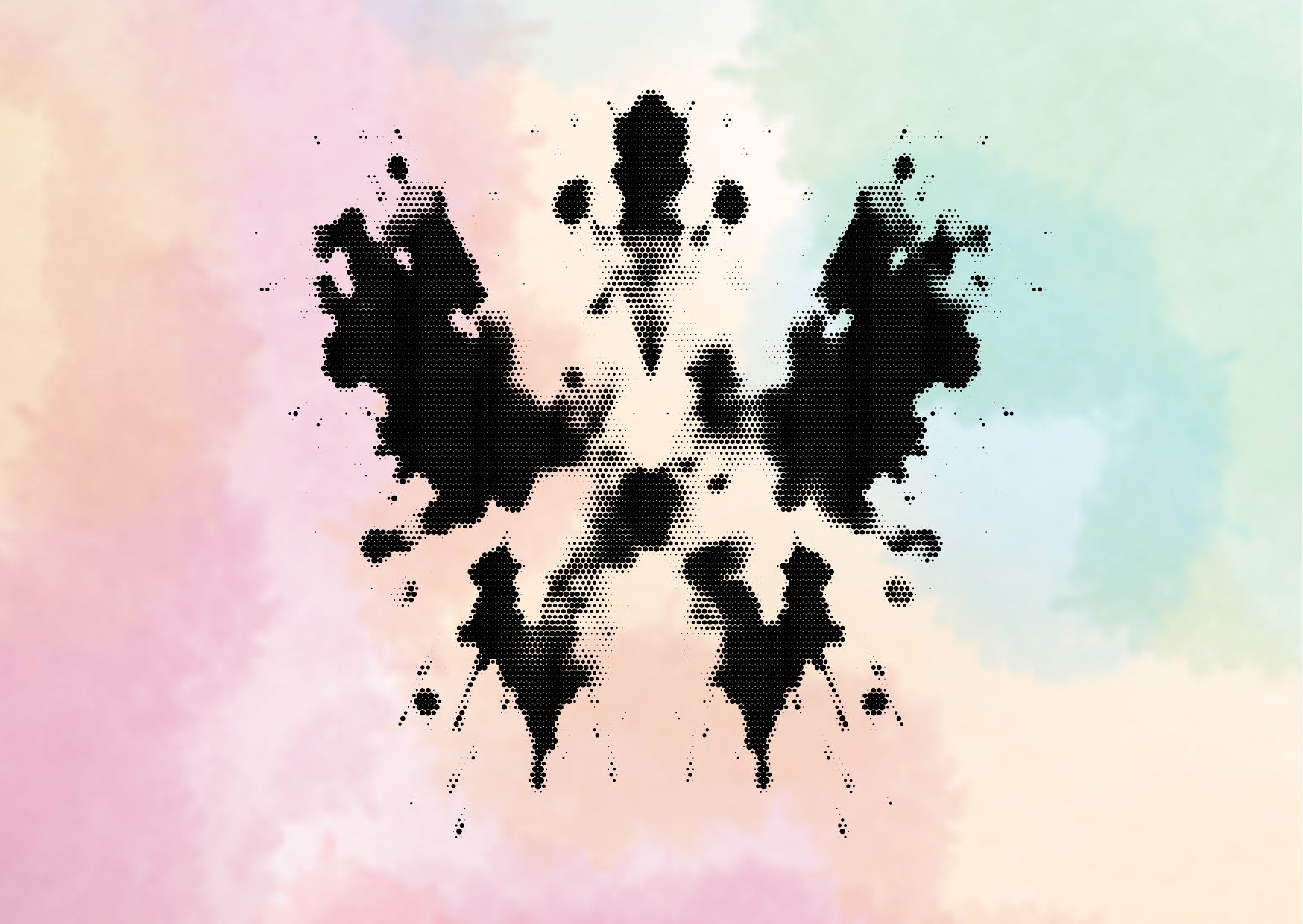Understanding the Rorschach Test: How Does It Work?
The Rorschach test, a pioneering projective assessment tool developed by Swiss psychiatrist Hermann Rorschach, has captivated the realm of psychology and popular culture alike. This iconic inkblot test presents individuals with a series of ambiguous, symmetrical images, prompting them to describe their perceptions and interpretations. Its underlying principle is that these responses offer insights into an individual’s personality traits, emotional state, and cognitive processes.
The Rorschach test examines how people perceive and ascribe meaning to abstract visual stimuli, potentially revealing unconscious thought patterns, emotional conflicts, and mental disorders like schizophrenia. Rooted in Freudian psychoanalytic concepts and Rorschach’s fascination with inkblots from childhood, this groundbreaking method has evolved into a widely recognized projective technique in psychiatry and clinical psychology. In this comprehensive guide, we delve into the origins, administration, scoring, interpretations, controversies, and modern adaptations surrounding the Rorschach test.
What is the Rorschach Test?
Definition and purpose of the test
The Rorschach test is a projective psychological assessment tool that involves presenting individuals with a series of 10 ambiguous, symmetrical inkblot images. The fundamental principle behind this test is that an individual’s perceptions and interpretations of these abstract visual stimuli can provide insights into their personality traits, emotional functioning, cognitive processes, and potential mental disorders.
The primary purpose of the Rorschach test is to serve as a projective technique, allowing individuals to project their inner thoughts, emotions, and unconscious tendencies onto the ambiguous inkblots. By analyzing the responses given by the individual, psychologists and mental health professionals aim to gain qualitative information about various aspects of their personality, including motivations, response tendencies, affectivity, and interpersonal perceptions.
Brief history and development
The Rorschach test was developed by Swiss psychiatrist and psychoanalyst Hermann Rorschach in 1921. Its origins can be traced back to Rorschach’s childhood fascination with the game of “Klecksography,” which involved creating inkblots and interpreting the shapes and forms they resembled.
During his work with psychiatric patients, Rorschach observed that individuals with schizophrenia responded differently to the inkblots compared to those without mental illness. Inspired by Sigmund Freud’s theories of dream symbolism and the concept of free association, Rorschach developed a systematic approach to using inkblots as a projective assessment tool.
Initially, Rorschach created 15 inkblot cards, but due to financial constraints, only 10 were ultimately published in his monograph “Psychodiagnostik” in 1921. Tragically, Rorschach passed away the following year at the age of 37, but his groundbreaking work laid the foundation for the widespread use of the Rorschach test in clinical psychology and psychiatry.
Use in clinical psychology
The Rorschach test is widely employed in clinical psychology and psychotherapy as a tool for assessing various aspects of an individual’s personality and mental health. It is often used in conjunction with other assessment methods, such as interviews and self-report measures, to gain a comprehensive understanding of the client’s psychological profile.
Mental health professionals utilize the Rorschach test to explore a range of psychological factors, including:
- Personality traits and characteristics
- Emotional functioning and regulation
- Cognitive processes and problem-solving abilities
- Interpersonal relationships and social perception
- Potential presence of mental disorders or psychological disturbances
The test results are analyzed based on established scoring systems and interpretive frameworks, which consider factors such as the content of the responses, the use of color, form perception, and the individual’s overall approach to the task.
While the Rorschach test has been subject to ongoing debates and criticisms regarding its reliability and validity, it remains a widely used and influential projective technique in the field of clinical psychology, providing valuable insights into an individual’s psychological functioning when used in conjunction with other assessment methods.
The Inkblots
Description of the inkblot cards
The Rorschach test comprises a series of 10 symmetrical inkblot cards that are presented to the individual being assessed. These inkblots are carefully designed and standardized, with each card featuring a unique pattern and composition. The set of 10 cards can be categorized as follows:
- Five cards are black and white, featuring monochrome inkblots.
- Two cards incorporate black, red, and gray colors.
- Three cards are multicolored, showcasing a vibrant array of hues.
During the administration of the test, the examiner presents one card at a time and prompts the individual with the question, “What might this be?” The individual is encouraged to interpret the ambiguous inkblot images freely, describing the shapes, forms, or objects they perceive within the abstract patterns.
Symmetry and design elements
A distinctive characteristic of the Rorschach inkblots is their symmetrical nature. Hermann Rorschach deliberately chose symmetrical designs for the inkblots, as he believed that asymmetric figures might be rejected by some individuals, potentially hindering the assessment process. Symmetry not only provides an artistic composition but also ensures consistent conditions for both right-handed and left-handed individuals.
Rorschach experimented with various asymmetric and symmetric designs before settling on the final set of symmetrical inkblots. He reasoned that symmetry facilitates interpretation for individuals who may initially feel blocked or hesitant, ultimately enhancing the interpretive process.
Purpose of ambiguous stimuli
The fundamental premise of the Rorschach test lies in the ambiguity of the inkblot stimuli. These abstract, symmetrical images are intentionally designed to be meaningless and open to interpretation. The underlying belief is that an individual’s responses to these ambiguous stimuli can provide insights into their thought processes, emotional states, and unconscious tendencies.
By projecting their own perceptions, associations, and interpretations onto the inkblots, individuals reveal aspects of their personality, cognitive functioning, and emotional experiences. The ambiguity of the stimuli is crucial, as it allows for a wide range of idiosyncratic responses, enabling psychologists to analyze and interpret these responses within the context of the individual’s psychological profile.
Recent research has suggested that while the inkblots may appear meaningless at first glance, individuals typically respond to both ambiguous and meaningful aspects of the blots, further enriching the interpretive process.
Administration and Scoring
Testing Procedure
The administration of the Rorschach test follows a standardized procedure to ensure consistent and reliable results. The examiner presents the 10 inkblot cards to the examinee one at a time and asks, “What might this be?” The examinee is encouraged to interpret the ambiguous images freely, describing the shapes, forms, or objects they perceive within the abstract patterns.
The key steps involved in the testing procedure are:
- Presentation: The examiner shows each inkblot card individually and prompts the examinee with the open-ended question, allowing them to respond without any constraints or suggestions.
- Response: The examinee is free to interpret the ambiguous image however they want, taking as much time as needed and providing as many responses as they desire. They can also hold the cards in any position, whether upside down or sideways.
- Recording: The examiner meticulously records everything the examinee says, no matter how trivial it may seem. They also note the time taken for each response, the position of the card, and any emotional expressions or behaviors exhibited during the test.
- Confirmation: After going through all the inkblots once, the examiner revisits each card with the examinee. The goal is not to elicit new information but to help the examiner understand the examinee’s perspective by asking them to identify the specific features or areas of the inkblot that prompted their initial responses.
The administration process typically takes approximately 1.5 hours to complete, including both the initial response phase and the confirmation phase.
Scoring Methods and Interpretation
Interpreting the Rorschach test responses involves a complex scoring system and requires extensive knowledge, skill, and training on the part of the examiner. The most widely used scoring method is the Exner Comprehensive System, developed by John Exner in 1974.
The scoring process involves analyzing various aspects of the examinee’s responses, including:
- Content: The examinee’s responses are categorized based on the content or objects they perceive, such as human figures, animals, nature elements, or abstract shapes.
- Location: The examiner identifies the specific area of the inkblot used by the examinee to formulate their response, ranging from the entire blot (W) to an uncommon or unusual detail (Dd).
- Determinants: The examiner considers the features or characteristics of the inkblot that influenced the examinee’s perception, such as color, form, movement, shading, or reflections.
- Form Quality: The examiner evaluates how well the examinee’s description of the perceived form matches the actual area of the inkblot used.
- Organizational Activity: The examiner assesses the degree of organization required to integrate the perceived form, using a weighted scoring method called the Z score.
The interpretation of the Rorschach test is based on a comprehensive analysis of the examinee’s responses, taking into account the patterns, themes, and unique characteristics observed across various scoring categories. Experienced examiners use this information to gain insights into the examinee’s personality traits, emotional functioning, cognitive processes, and potential psychological disorders or disturbances.
Reliability and Validity Concerns
Despite its widespread use, the Rorschach test has faced criticism regarding its reliability and validity. Reliability refers to the consistency of results obtained, regardless of who is scoring the test. The subjective nature of the scoring process and the reliance on examiner interpretation have raised concerns about the test’s reliability.
Two examiners analyzing the same set of responses may arrive at different conclusions, as the interpretation is heavily influenced by the examiner’s expertise and subjective judgments. This lack of inter-rater reliability has been a longstanding issue with the Rorschach test.

